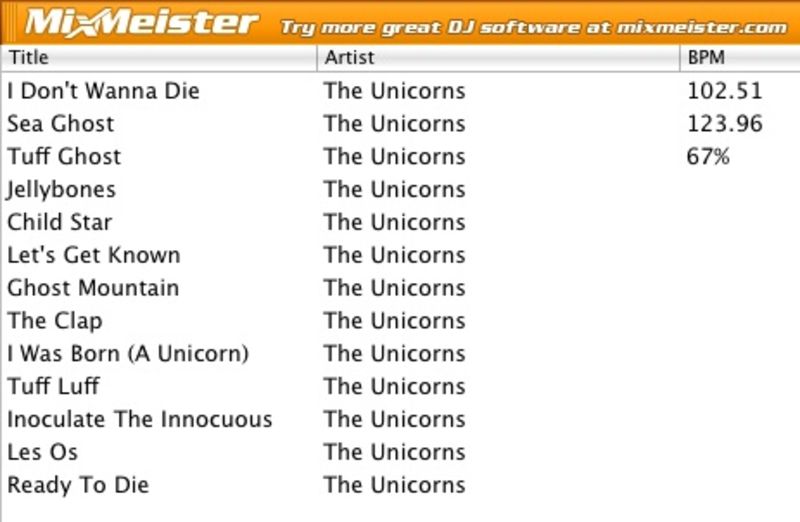Key And Bpm Analyzer
- Itunes Bpm Analyzer Mac
- Bpm Analyzer Itunes Mac
- Itunes Bpm Analyzer
- Itunes Bpm Analyzer 2020
- Itunes Bpm Analyzer 2021
The GetSongBPM song analyser calculates the beats per minute of any song. The simple drag and drop app could not be easier to use, and will measure the BPM from any audio file. It supports a wide range of file formats. Finding the songs with the best tempo. PistonSoft BPM Detector is a dedicated, free BPM calculator software for Windows. It lets you browse audio tracks using its own file explorer and view their respective BPM values. If BPM of a song is missing, you can use its Detect BPM option. The good part of this software is that it even lets you tag BPM to audio metadata.
Free Music Analyzer
MixMeister BPM Analyzer is a free program you can use to automatically detect the exact BPM (beats per minute) of any song. The tags in most digital music files provide no BPM information at all. MixMeister BPM Analyzer is a program you can use to determine the exact BPM (beats per minute) of any song. BPM Analyzer allows you to: Calculate extremely accurate BPM counts for any song; Drag and drop music files from Windows Explorer; Display and sort files by Title, Artist, or BPM; Update ID3 tags in your music files with exact BPM information.
Music Bpm Analyzer Download Free
Itunes Bpm Analyzer Mac
MixMeister BPM Analyzer is a free program you can use to determine the exact BPM (beats per minute) of any song. The tags in most digital music files provide no BPM information at all, and others contain estimates which are often inaccurate. Whether you´re choosing songs to mix together, building a playlist for a specific mood, or comparing different versions of a song, BPM Analyzer makes finding the correct BPM easy. This is a simple program, but the BPM measurement engine is adapted from MixMeister Technology´s award-winning line of pro DJ software, and it generates the most accurate BPM counts available anywhere. MixMeister BPM Analyzer supports dragging and dropping files from Windows Explorer, and allows you to sort your music list by Title, Artist, or BPM. You can update ID3 tags in your music files with exact BPM information, print BPM reports for your entire music collection, or even export BPM counts for use in other programs like Excel or music databases. This is a fully-functional version. You can use and distribute this software completely free of charge for non-commercial purposes.
I have figured out a way to add Beats Per Minute to music in iTunes using free software (for those using Windows):
1) Install foobar2000. When you double click on the exe file to install it, you can select to add a portable version or install it.
2) After installation, install a plugin to foobar2000 named 'BPM Analyser' (they call plugins 'components'). The download will have an extension named *.fb2k-component.
3) Open foobar2000 and set up the left pane named 'Album List' so it has the folder where your iTunes music is stored. Right click on any song or groups of songs and select 'BPM Analyser'. Then select 'Automatically analyze BPMs' to show results. You can check to see if you agree with the results by playing the song and right clicking on the songs again and selecting 'Manually tap BPM for current track'. It will display a button that you can tap in time with the music. You can then compare the two numbers to see if they agree and then press the button 'Update File' to add the number to the BMP tag in the music file. Of course if you trust the automatic calculation, you can click on 'Update File' when it is done. I have found the automatic calculation is usually accurate though occasionally off.
4) Install Mp3tag:
The foobar plugin just adds the number to the BPM field. iTunes requires that each entry to have ' BPM' entered after the number. After installing Mp3tag, open the music file that you changed with foobar. You will need to add a heading for BPM because it won't be there by default. Do this by right clicking on the column headings. Highlight the files you want to change and then click on the 'Convert' pull down menu and select 'Tag – Tag'. Select 'BPM' in the pull down list and enter the following in the 'Format String':
%BPM% BPM
Then click on the 'OK' button. Mp3tag will add some lead zeros to the number and that is OK.
5) Open iTunes and display the the 'Songs' view. Add the BPM column heading if you haven't already. The BPM field will be blank. You can play the song or right click on the song and select 'Song Info' to make it update the tag information. This will take too long if you have added very many BPM counts.
Download the 'UpdateTagInfo' script from here:
Highlight the songs you want to update in iTunes. Double click on the file 'UpdateTagInfo.vbs' and then click on 'Yes'. This will update all the files you selected.
Bpm Analyzer Itunes Mac
Itunes Bpm Analyzer
There are quite a few steps but it doesn't usually take long once you do it a few times. Step 3 may take some time if you select hundreds of songs.
Itunes Bpm Analyzer 2020

iTunes-OTHER, Windows 8
Itunes Bpm Analyzer 2021
Posted on Jan 31, 2018 12:18 PM